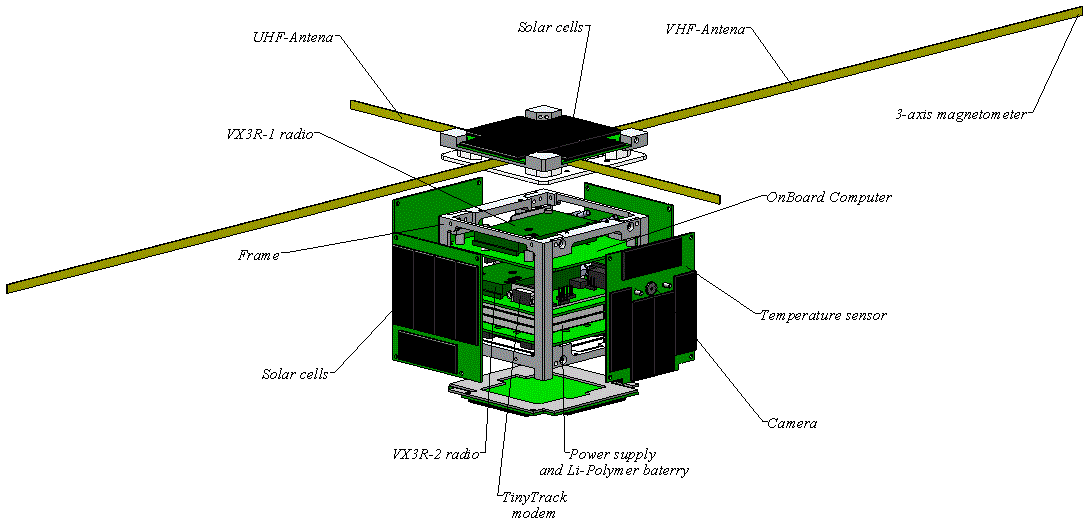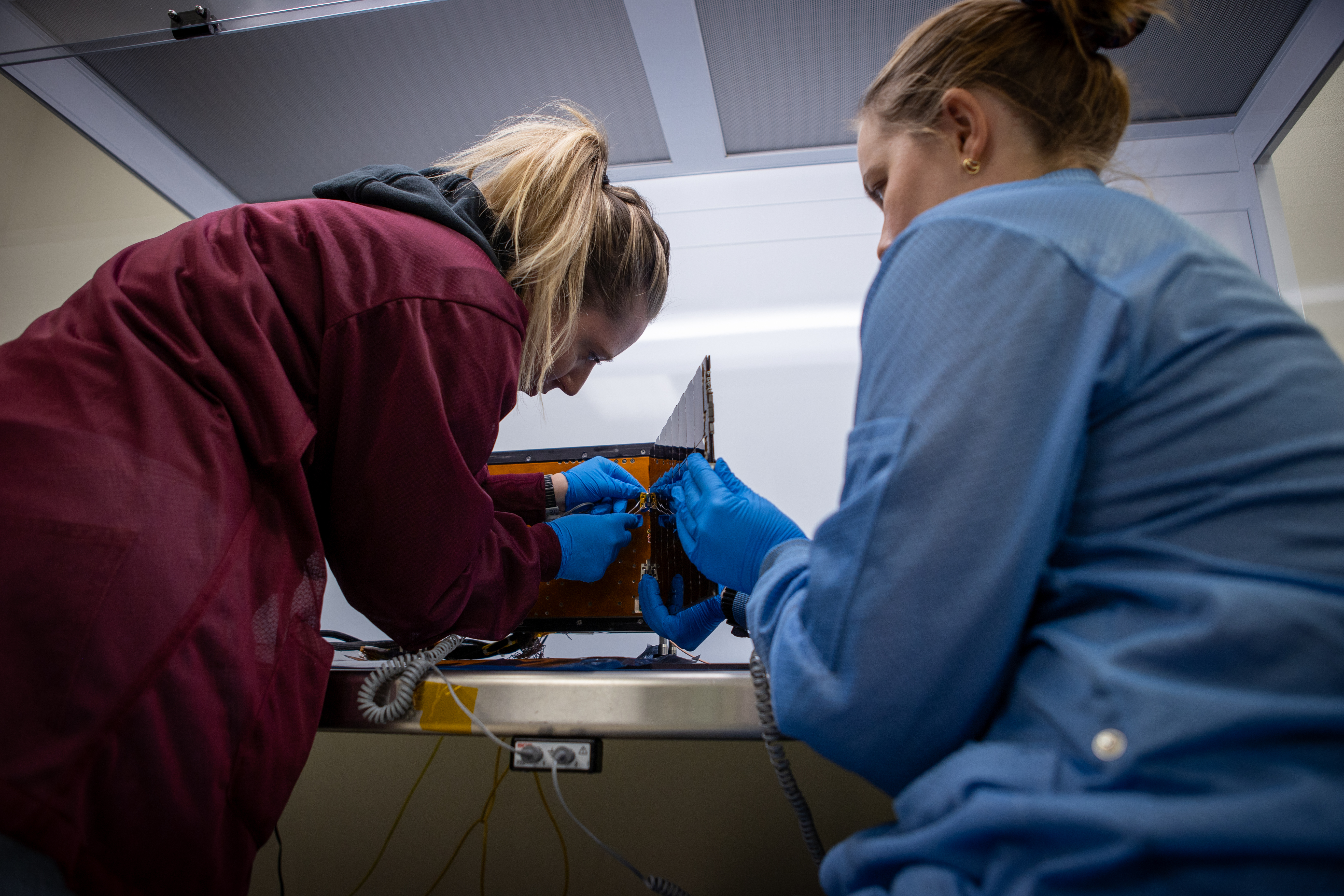Systems Engineering Overview
Overview
Systems Engineering (SE) is the disciplined, iterative approach used to define, design, verify, and operate space systems as an integrated whole.
For spacecraft and satellites, SE provides the framework that transforms a mission concept into an operational capability while balancing performance, cost, schedule, risk, and safety.
NASA’s Systems Engineering Handbook defines SE as “a holistic, interdisciplinary process that coordinates technical activities to meet stakeholder needs throughout the system lifecycle.” 1
Lifecycle & the V-Model
The space-mission lifecycle is commonly represented by the V-Model (or “Vee”) shown below.
It links the development (left side) and integration/verification (right side) activities and emphasizes early validation of requirements.

Figure 2-1. Generic V-Model for systems engineering processes. 1]
NASA tailors the V-Model to six project phases (Pre-Phase A to Phase F) as formalised in NPR 7123.1C. 2
Governing Standards & Guidance
| Domain | Key Document | Scope |
|---|---|---|
| U.S. Government | NASA SP-2016-6105 Rev 2 – NASA Systems Engineering Handbook | Agency-wide SE policy, 17 technical processes, life-cycle reviews. 2 |
| NPR 7123.1C – SE Processes & Requirements | Mandatory SE requirements for all NASA flight projects. 3 | |
| Europe | ECSS-E-ST-10C Rev 1 – System Engineering – General requirements | Baseline SE requirements for ESA and European industry. 4 |
| International | INCOSE Systems Engineering Handbook 5th ed. | Generic SE processes and best practices across domains. 5 |
| Academic reference | Wertz & Everett — Space Mission Engineering: The New SMAD | Comprehensive, quantitative design methods for space missions. 6 |
Core Technical Processes (NASA 17-Process Set)
| Group | Process (examples) |
|---|---|
| System Design | Stakeholder Expectations Definition, Technical Requirements Definition, Logical/Physical Architecture, Design Solution |
| Product Realization | Product Implementation, Integration, Verification, Validation, Transition |
| Cross-Cutting | Technical Planning, Risk, Configuration, Information & Data Management, Decision Analysis, Interface Management, Technical Assessment |
These processes are applied iteratively in every life-cycle phase, with increasing model fidelity and maturity targets (TRLs).
Model-Based Systems Engineering (MBSE)
Modern projects increasingly adopt MBSE using SysML or domain-specific languages to:
- maintain a single source of truth for requirements, architecture, and verification logic;
- enable early digital simulation of performance and interfaces;
- automate consistency checks and documentation.
NASA and ESA both promote MBSE pilots and mandate digital data packages for major reviews.
Verification & Validation (V&V) Strategy
- Verification shows each requirement is met (analysis, test, inspection, or demonstration).
- Validation confirms the integrated system satisfies the mission need in its operational environment.
Early allocation of V&V methods reduces downstream cost and schedule risk. Tailoring is documented in a V&V Matrix within the Systems Engineering Management Plan (SEMP). 5
Configuration & Interface Management
Spacecraft comprise tightly coupled subsystems (power, ADCS, comms, thermal, etc.). Interface Control Documents (ICDs) and rigorous configuration control prevent “late-integration surprises.”
The exploded-view CubeSat below illustrates typical subsystem interfaces.

Figure 7-1. CubeSat subsystem stack and external appendages. 7
Integration & Test Example
During Assembly, Integration & Test (AIT) the flight article is gradually built and verified.
The image shows NASA engineers installing solar panels on the BurstCube GRB-detecting CubeSat.

Figure 8-1. BurstCube integration in the CubeSat Lab (NASA/GSFC). 8
Best-Practice Checklist
- Define success early – clear mission objectives and success criteria.
- Engage stakeholders continuously – requirements validation.
- Implement MBSE – keep models, requirements, and analysis in sync.
- Tailor standards to project class (e.g., SmallSat vs. flagship).
- Plan V&V up-front – allocate methods and environments.
- Maintain rigorous interface control – avoid late design churn.
- Monitor risks & margins – technical, cost, schedule, and safety.
Further Reading
- NASA SE Training (APPEL) modules
- ESA ECSS Tutorials and tailoring guidelines
- INCOSE Guide for Integrating SE & PM
- AIAA G-043A-2022 Guide to Verification & Validation of Space Systems
References
Footnotes
-
NASA, Systems Engineering Handbook, NASA/SP-2016-6105 Rev 2 (2020). ↩ ↩2
-
NASA, NPR 7123.1C Systems Engineering Processes & Requirements (2023). ↩ ↩2
-
ECSS, ECSS-E-ST-10C Rev.1 – System Engineering, General Requirements (2017). ↩
-
J. Wertz, D. Everett et al., Space Mission Engineering: The New SMAD (Microcosm, 2011). ↩
-
Wikimedia Commons, “Vee Model for Systems Engineering Process.svg” (2013). ↩ ↩2
-
INCOSE, Systems Engineering Handbook 5th Edition (2023). ↩
-
Wikimedia Commons, “F-1 CubeSat exploded view.png” (2011). ↩
-
NASA SVS, “BurstCube Gets Its Solar Panels” image ID 14488 (2023). ↩